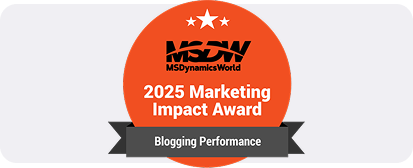Salesforce to dynamics 365 migration: step by step | 2025
Considering a Salesforce to Dynamics 365 migration? You have come to the right place!
As we know, CRM systems have become essential for managing customer data, optimizing processes, and driving business growth. When it comes to leading CRM systems, Salesforce and Dynamics 365 are among the top options.
Salesforce is used in a large number of organizations located in Canada. However, as business needs evolve, some organizations choose to migrate to Microsoft Dynamics CRM because of its integration options, system scalability, and compatibility with their existing technology landscape. Salesforce migration to Dynamics 365 should be organized in a way that involves thorough planning, technical accuracy, and proper understanding of the two platforms.
So, In this article, we will discuss the reasons why enterprises consider Salesforce migration and the process to be followed for a successful transition.
However, before getting into the details, we need to know about the platforms first.
First, we will start with Salesforce.
Overview of Salesforce
Salesforce is one of the most popular cloud-based CRM software that assists organizations in managing sales, service, marketing, and customer data all under one platform. It is widely applied in industries and has tools that can simplify work processes, monitor customer activity, and enhance decisions.
It incorporates configurable objects, advanced automation, AI-driven analytics, and access to thousands of third-party applications through the Salesforce AppExchange. Salesforce helps businesses manage leads, opportunities, and customer cases, while also supporting campaign tracking and customer journey development through interactive reports and dashboards.
Overview of Dynamics 365
Dynamics 365 is an integrated business software platform that brings together the CRM capabilities and top-notch Microsoft ERP systems. It is designed to fit within the Microsoft ecosystem to harmonize sales, marketing, customer service, finance, supply chain, and operations in one secure environment.
It incorporates deep integrations with Microsoft 365 applications such as Teams, Outlook, and Excel. It has a powerful data structure due to Microsoft Dataverse, and the apps within this ecosystem come with built-in AI and analytics. Besides, it has modular licensing options, which make it highly flexible and scalable. Dynamics 365 can support low-code automation, development of custom apps, and advanced reporting with the Power Platform available without using copious custom code.
Dynamics 365 also provides native CRM integration with ERP, centralized governance, and compliance options optimized to meet the unique needs of Canadian businesses. For organizations considering a Salesforce to Dynamics CRM migration, this creates a single point of truth for visibility into customer and operational information, enhancing business decision-making.
Why Migrate from Salesforce to Dynamics 365
Here are the various benefits associated with migration:
Strategic alignment: The combination of CRM, ERP, and productivity tools to speed up sales, marketing, operations, and finance.
Technology consolidation: Collaborate within a trusted single Microsoft environment via integration of productivity, analytics, and CRM to improve ease of governance and security.
Data and insights: Unify reporting with a common data model, with the use of data-driven insights and better forecasting gleaned using AI.
Risk management: Adopt a systematic procedure of migration to reduce the downtime risk, the risk of data loss, and the enhanced user initiation.
Microsoft ecosystem strength: Extend the use of native integration by incorporating Microsoft 365, the Power Platform, and other Microsoft ERP modules.
Now, let’s walk through the migration journey in simple steps.
Migration Steps from Salesforce to Dynamics 365
The migration from Salesforce to Dynamics 365 goes through the following steps. These steps, in order, will make the transition smooth and secure and support user acceptance and data integrity.
1. Determining and Planning
You should have clear objectives regarding the transition to Dynamics 365, which primarily includes data and process mapping of Salesforce. Merge and clean up duplicates, resolve data issues, and establish security and compliance rules.
2. Design and architecture
Decide what Dynamics 365 apps you want to use and whether you will undertake a gradual or complete migration. Make sure your data model and integrations are aligned with emails, ERP, and other tools.
3. Data Preparation
Map the Salesforce object to Dynamics 365 and define cleansing rules and a cutover plan. Run tests in a safe environment before moving on to live.
4. Migration Execution
Move or replicate data in phases: first load, then validate, followed by syncing new changes. This can be tested by the users to make sure that everything is functioning.
5. User Training
Train teams according to the roles and offer fast guides and in-app tips to adopt faster.
6. Go-Live and Support
Upgrade to Microsoft Dynamics CRM with minimum downtime. Keep track of how the monitoring systems work, eliminate problems efficiently, and perform routine backups.
Benefits of Salesforce to Business Central Migration
With Salesforce to Dynamics 365 migration, you get the following benefits:
- Integrated data design and improved data quality
- A high level of native Microsoft ecosystem integration (Outlook, Teams, Power Platform, etc.)
- Better analytics and process automation using Power Platform
- Scalable CRM + ERP in one cloud solution (Dynamics 365 CRM + ERP)
- Improved compliance and security to the Microsoft standard
How Dynamics Square can help
As a Microsoft Dynamics Partner, we offer extensive product expertise along with official Microsoft support. We have effectively helped many businesses in Canada transition their Salesforce platform to Dynamics 365 with ease.
Our local knowledge means we are aware of the Canadian business requirements, time zones, and compliance requirements. Whether it is planning, data migration, training, or post-go-live optimization, we can provide end-to-end solutions to get the best out of your Dynamics 365 investment.
Do you want to migrate your Salesforce to Dynamics 365 with a certified Dynamics 365 implementation partner in Canada?
Contact us today at +1 778 381 5388 or info@dynamicssquare.ca.
People Also Ask:
1. Does Salesforce integrate with Dynamics 365?
Yes, Salesforce can be integrated with Dynamics 365 using Microsoft Salesforce connectors since they allow companies to synchronize the primary CRM data related to accounts, contacts, and leads with both systems. This simplifies the process of integrating CRM when under a running project or Salesforce migration.
2. Will Dynamics 365 overtake Salesforce?
Even though Salesforce is quite a popular choice in the CRM market, Dynamics 365 is gradually gaining market share, especially among companies that need a smooth integration with Microsoft Dynamics ERP, Microsoft 365, and the Power Platform.
The decision of whether Dynamics 365 may replace Salesforce depends on market trends and user demands, yet its integrated CRM and ERP solution makes it a good choice to be considered by organizations thinking about migration.
3. How do I import data into Dynamics 365 CRM?
Microsoft Dynamics CRM has an in-built Import Data Wizard, which allows data to be imported. Businesses moving into Salesforce can import CSV or XML files, define Salesforce fields & Dynamics 365 fields, and check the data integrity before completing the migration.
4. What is the difference between Dynamics 365 and Salesforce?
Dynamics 365 is a combined CRM and ERP system, which offers modules related to finance, operations, service, and sales and relies upon strong integration of Microsoft products. In comparison, Salesforce is a mature CRM that focuses on customer relationship management and does not have embedded ERP support, whereas ERP support generally needs third-party add-on



